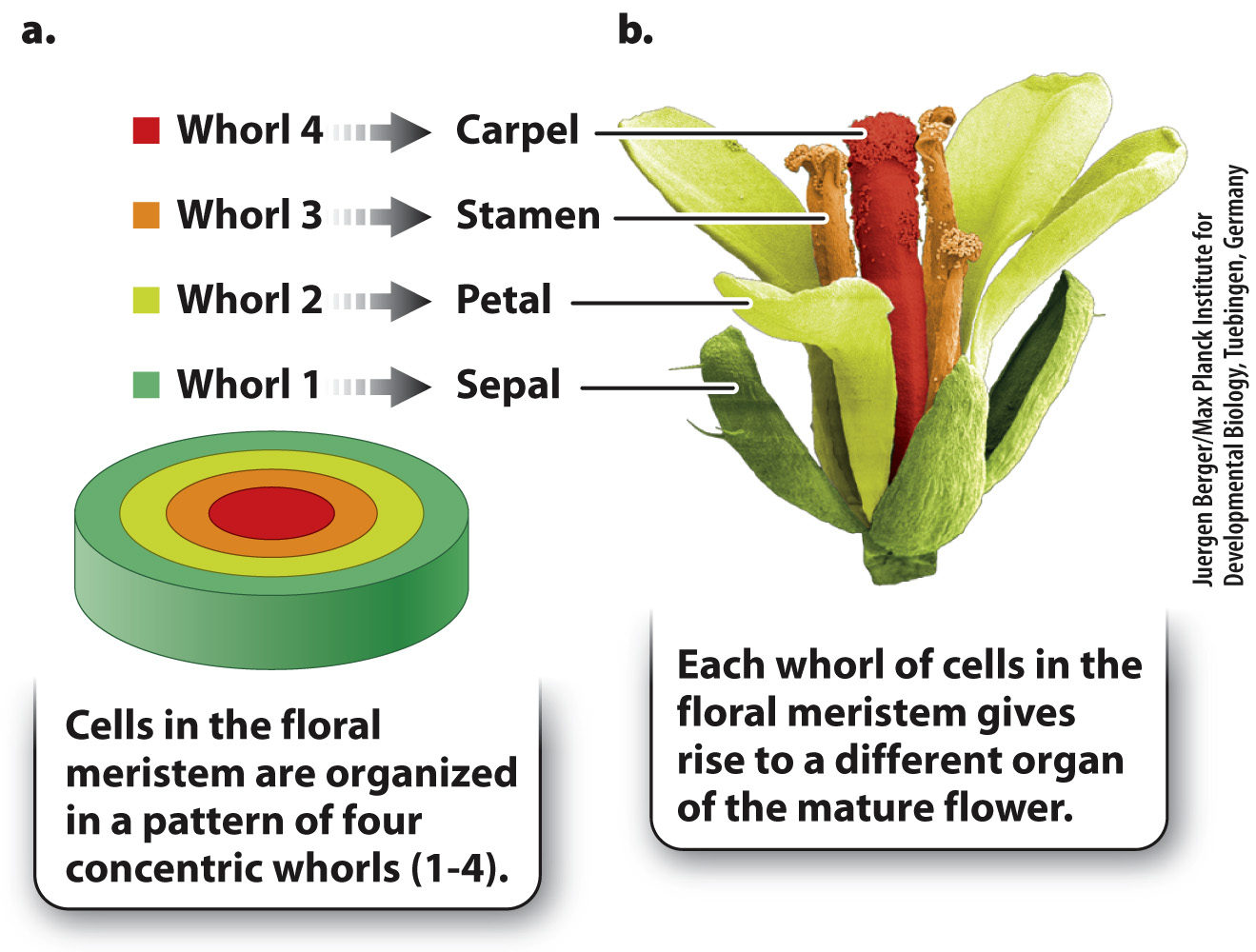Floral differentiation is a model for plant development.
The plant Arabidopsis thaliana, a weed commonly called mouse-
413
From the outermost whorl (whorl 1) of cells to the innermost whorl (whorl 4), the floral organs are formed as shown in Fig. 20.19:
Cells in whorl 1 form the green sepals, which are modified leaves forming a protective sheath around the petals in the flower bud that unfold like petals when the flower opens.
Cells in whorl 2 form the petals.
Cells in whorl 3 form the stamens, the male sexual structures in which pollen is produced. (The small granules on the stamens in Fig. 20.19b are pollen grains.)
Cells in whorl 4 form the carpels, the female reproductive structures that receive pollen and contain the ovaries.
